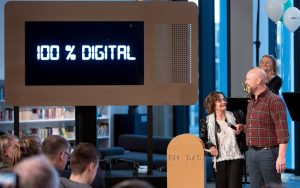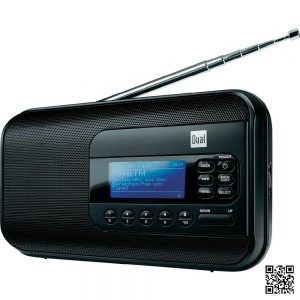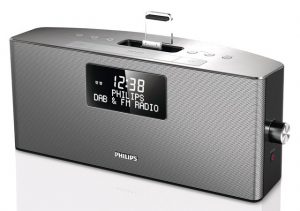 Norway opened a chapter in telecommunications history on Wednesday, becoming the first country to cease FM radio broadcasting. The switch, to digital broadcasting, is intended to save money, but critics are worried about the effect on drivers and listeners of small radio stations.
Norway opened a chapter in telecommunications history on Wednesday, becoming the first country to cease FM radio broadcasting. The switch, to digital broadcasting, is intended to save money, but critics are worried about the effect on drivers and listeners of small radio stations.
The move to “radio digitization” was decided by Parliament in 2011, and a timetable was announced in 2015. At 11:11 a.m. on Wednesday, Jan. 11 — a time chosen because it was easy to remember, according to the national broadcaster, NRK — nationwide radio channels began stopping FM broadcasts, switching to a system known as digital audio broadcasting that proponents say offers a wider range of broadcasting options and greater sound quality.
The change is occurring county by county, starting with Nordland, in the north of Norway. Oslo, the capital, will turn off FM broadcasting in September, and the process will be completed nationwide by Dec. 13.
Norway’s Culture Ministry estimated that it would save 180 million kroner a year, or about $25 million.
 FM broadcasting originated in the United States in the 1930s and arrived in Norway in the 1950s. Other countries have considered dropping FM broadcasting, including Britain, Switzerland and Denmark, but no decision has been made; Sweden considered the switch but abandoned the idea.
FM broadcasting originated in the United States in the 1930s and arrived in Norway in the 1950s. Other countries have considered dropping FM broadcasting, including Britain, Switzerland and Denmark, but no decision has been made; Sweden considered the switch but abandoned the idea.
Some Norwegians, like Benjamin Stage Storm, a hospital doctor living in Bodo, in Nordland, said the change was no big deal for him and his family.
“We don’t listen much to radio, and in the car we have an SD card reader,” which lets users play prerecorded music stored on tiny digital cards, he said in a phone interview, “so we listen to music on that, almost old-time mix tapes.”
He added: “We do listen to radio shows, but we get them from podcasts or off the SD cards.”
Dr. Stage Storm said, however, that the government and NRK were spending a “vast amount of resources on shutting down a functional system and at the same time pushing lots of people into scrapping their otherwise well-working radios.”
The change is good news for radio sellers, however.
Camilla Tully, a spokeswoman for the retail chain Clas Ohlson, said the demand for digital radios had grown steadily since Parliament’s vote in 2011.
“The sale of DAB radios exploded before Christmas, and the sales tripled over the last couple of months,” she said in a phone interview. “Before Christmas, we were sold out of several models. These days the demand is particularly high in Nordland, both for DAB radio and DAB adapters for car stereos.”
Oyvind Vasaasen, an official at NRK who is overseeing the change, said that Norway had been an “early mover” in digital radio, introducing internet radio broadcasting as far back as 1995.
Given the size of the country — with its mountains and fjords — and its small population, it is particularly expensive to offer both FM and digital audio broadcasting, he said.
“The costs of maintaining an upgraded FM system would in the long run affect the quality of programs we can offer the listeners,” he said. “Digitizing the radio media is part of the modernization of Norway.”
Aage Sveum, a radio collector, expressed fears that the change would put drivers at risk. “What is the purpose of having a mandatory emergency alert system if no one has radios in their cars anymore?” he asked.
Nils Sodal, a spokesman for the Norwegian Automobile Federation, echoed that concern, noting that about two million cars in Norway still did not have digital radios. He said the association did not oppose the switch, but was worried that many motorists would not switch to the digital radios. A new car radio costs about 2,000 kroner, or about $232.
 Thor Magnar Thorsen, the vice president of the Association of Local Radio Stations in Norway, told the newspapers last year that the change might come “at the expense of smaller radio stations.”
Thor Magnar Thorsen, the vice president of the Association of Local Radio Stations in Norway, told the newspapers last year that the change might come “at the expense of smaller radio stations.”
Stephen Lax, a senior lecturer in communication technology at the University of Leeds in England, said he was not certain that Norway’s switch would portend a trend.
“Norway has a small and relatively affluent population that can be convinced into making the transition, in spite of the costs for the consumers,” he said. “Norway’s switch could prove a symbolic moment in the history of radio broadcasting, but not a significant one, in the sense that it’s not going to start a snowball rolling.”
He added: “Closing down the FM is not even on the horizon for the United States, where FM will be around for a long, long time.”
In addition, he said, digital audio broadcasting is mostly used in Europe, whereas many Americans who use digital radio have opted for HD radio, which broadcasts a digital signal over traditional radio frequencies.
Marko Ala-Fossi, an adjunct professor at the School of Communication, Media and Theater at the University of Tampere in Finland, added a cautionary note.
“Norway is now conducting a massive experiment with the future of radio on a national scale with no guarantee of success,” he said. “You can lose older listeners without
Did you know that if you subscribe to our website, you will receive email notifications whenever content changes or new content is added.
1. Enter your e-mail address below and click the Sign Me Up button.
2. You will receive an email asking you to confirm your intention of subscribing to our site.
3. Click the link in the email to confirm. That’s all there is to it! Note: if you wish to unsubscribe from our site, click the unsubscribe link at the bottom of the email you received.
Then indicate you no longer wish to receive our emails.
Thank You
Dialect Zone International